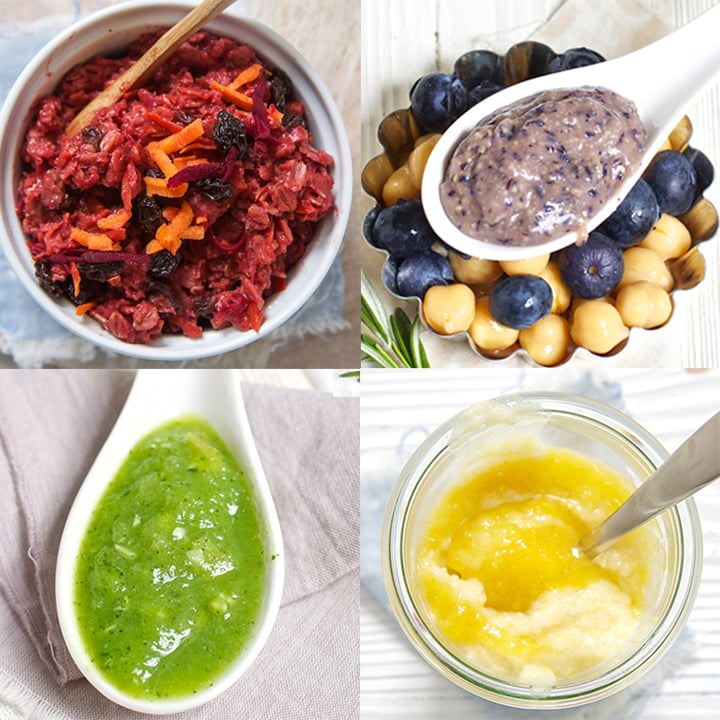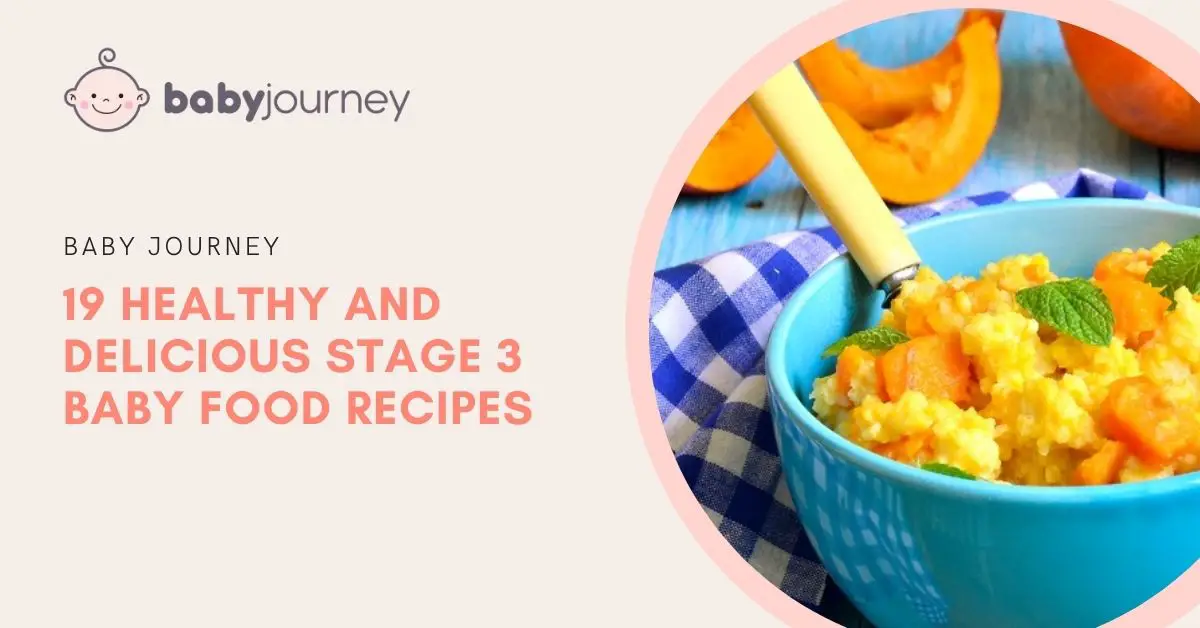As your little one embarks on the exciting journey of culinary exploration, Stage 3 baby food recipes offer a tantalizing array of flavors and textures to delight their developing taste buds. These delectable concoctions are meticulously crafted to provide essential nutrients while introducing a wider variety of ingredients, setting the stage for a lifelong love of wholesome and adventurous eating.
Stage 3 recipes bridge the gap between pureed foods and table fare, encouraging your baby’s oral motor skills and introducing them to the wonderful world of textures. From smooth mashes to soft finger foods, these recipes provide a sensory adventure that stimulates their curiosity and supports their overall development.
Stage 3 Baby Food Recipes

Stage 3 baby food recipes are designed for babies who are between 8 and 12 months old. These recipes are more complex than Stage 1 and Stage 2 recipes and include a wider variety of ingredients.
The purpose of Stage 3 baby foods is to help babies develop their chewing and swallowing skills. These recipes also help babies get used to different flavors and textures. Stage 3 baby foods are typically made with a combination of pureed fruits, vegetables, and grains.
Common Ingredients Used in Stage 3 Recipes
Some of the most common ingredients used in Stage 3 baby food recipes include:
- Fruits: apples, bananas, berries, pears, peaches
- Vegetables: carrots, sweet potatoes, peas, green beans, spinach
- Grains: oatmeal, rice, barley
- Meat: chicken, beef, pork
- Fish: salmon, tuna
- Dairy: yogurt, cheese
Nutritional Considerations
As babies enter stage 3, their nutritional needs become more complex. They require a wider variety of nutrients to support their rapid growth and development. Stage 3 recipes should be designed to meet these increased demands.
Some key nutrients that babies need at stage 3 include:
- Protein: Protein is essential for building and repairing tissues. Good sources of protein for babies include meat, poultry, fish, beans, and lentils.
- Iron: Iron is necessary for the production of red blood cells. Good sources of iron for babies include fortified cereals, meat, and leafy green vegetables.
- Calcium: Calcium is important for the development of strong bones and teeth. Good sources of calcium for babies include dairy products, fortified cereals, and leafy green vegetables.
- Vitamin D: Vitamin D helps the body absorb calcium. Good sources of vitamin D for babies include fortified milk, fatty fish, and sunlight.
To ensure that stage 3 recipes meet these nutritional requirements, it is important to include a variety of foods from all food groups. This will help to provide your baby with the nutrients they need to thrive.
Tips for Incorporating a Variety of Nutrients into Stage 3 Meals
Here are some tips for incorporating a variety of nutrients into stage 3 meals:
- Offer a variety of foods from all food groups at each meal.
- Make sure to include a good source of protein, iron, calcium, and vitamin D at each meal.
- Cook foods in a healthy way, such as steaming, baking, or grilling.
- Avoid adding salt or sugar to your baby’s food.
- Let your baby self-feed as much as possible.
Feeding Tips
Introducing stage 3 foods to babies is an exciting milestone. Here are some tips to ensure a smooth transition:Start by offering small amounts of new foods and gradually increase the quantity as your baby tolerates them. Puree or mash foods to a smooth consistency at first, then gradually introduce more textured foods as your baby develops chewing skills.
Dealing with Picky Eaters
It’s common for babies to be picky eaters. Here are some tips to encourage them to try new foods:* Offer a variety of foods from all food groups to expose them to different flavors and textures.
- Make mealtimes enjoyable and stress-free.
- Avoid pressuring your baby to eat, as this can create negative associations with food.
- Be patient and persistent. It may take several tries before your baby accepts a new food.
Safety Precautions
Preparing stage 3 baby foods requires utmost attention to food safety to protect your little one from potential health hazards. Adhering to proper handling, storage, and reheating techniques is crucial for ensuring the safety of these meals.
Contamination with bacteria, such as Salmonella and E. coli, can occur during preparation, storage, or reheating if appropriate measures are not taken. These bacteria can cause foodborne illnesses, leading to symptoms like vomiting, diarrhea, and fever.
Potential Hazards
- Bacteria: Contamination with harmful bacteria can occur from unwashed hands, dirty utensils, or contact with raw meat or poultry.
- Choking: Foods that are not cut or mashed properly can pose a choking hazard for babies.
- Allergic Reactions: Introducing new foods to your baby should be done gradually, as some babies may have allergies or sensitivities to certain ingredients.
Safe Practices
- Wash Hands: Always wash your hands thoroughly with soap and water before handling food and utensils.
- Clean Surfaces: Ensure all surfaces, utensils, and equipment used in food preparation are clean and sanitized.
- Cook Thoroughly: Cook all meats, poultry, and fish to a safe internal temperature to eliminate bacteria.
- Avoid Cross-Contamination: Keep raw meat and poultry separate from other foods during preparation and storage.
- Store Properly: Store cooked foods promptly in airtight containers in the refrigerator or freezer. Discard any leftovers after 2-3 days in the refrigerator or 2-3 months in the freezer.
- Reheat Safely: When reheating stage 3 foods, ensure they are heated thoroughly throughout, stirring or shaking them well to distribute heat evenly.
Final Conclusion

As you navigate the culinary landscape of Stage 3 baby food recipes, remember that every bite is an opportunity to nourish your baby’s growing body and mind. Experiment with different flavors and textures, involve your little one in the mealtime experience, and most importantly, savor the precious moments of sharing these culinary creations with your beloved child.
Common Queries
What is the purpose of Stage 3 baby food recipes?
Stage 3 recipes are designed to introduce a wider variety of flavors, textures, and nutrients into your baby’s diet, supporting their growth and development.
How do I transition my baby to Stage 3 foods?
Start by introducing single-ingredient purees and gradually increase the texture and complexity of the recipes as your baby shows readiness.
How can I ensure my Stage 3 recipes are nutritionally balanced?
Include a variety of fruits, vegetables, whole grains, and lean proteins to provide a comprehensive range of essential nutrients.
What are some common ingredients used in Stage 3 baby food recipes?
Fruits like bananas, apples, and berries; vegetables like sweet potatoes, carrots, and peas; and grains like oatmeal and rice.
How do I store and reheat Stage 3 baby foods safely?
Store homemade baby food in airtight containers in the refrigerator for up to 3 days or in the freezer for up to 3 months. Reheat thoroughly before serving.
